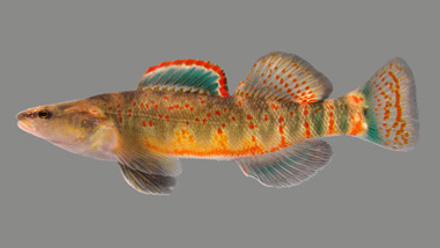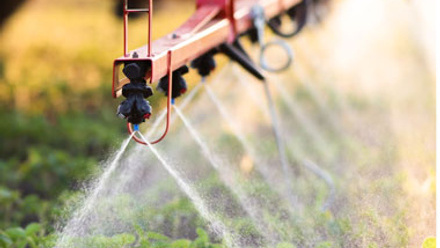All Things Plants: Advances in Aquatic and Terrestrial Plant Ecology, Ecotoxicology and Risk Assessment from the SETAC Europe 34th Annual Meeting
Guido Gonsior, GG Biotech Design; Zhongli Chen, Chongqing University; Rena Isemer, Bayer AG; David Olszyk, USEPA
Background
In the face of global conflicts and dramatic environmental change, new science-based solutions to protect the food chain, biodiversity, and terrestrial and coastal ecosystems are essential. Plants, as primary producers, play a key role in linking food webs and biogeochemical cycles. Ecology and ecotoxicology science allow us to calculate environmental risks and predict how plants will respond to climate change, biodiversity loss or increased agricultural land use due to the growing world population.
To address these issues, a session on “Aquatic and Terrestrial Plant Ecology, Ecotoxicology and Risk Assessment” was held at the SETAC Europe 34th Annual Meeting in Seville, Spain. The session was organized by the SETAC Plants Interest Group (IG) and included scientific contributors in the fields of aquatic and terrestrial plant ecology and ecotoxicology. It highlighted the diversity of insights into impacts of contaminants and pollutants on plants, including algae and higher aquatic and terrestrial plants, to aid understanding and promote reducing pollution.
Session Organization
The session featured 56 presentations (oral and posters) representing research from academia, government and business, with a balanced number of contributions on aquatic macrophytes, terrestrial plants and algae. The session was well attended, and each presentation was followed by lively discussions and questions.
Zhongli Chen, Chongqing University, and Guido Gonsior, GG Bio Tech Design, both members of the SETAC Plants IG Steering Committee, chaired the plants sessions and opened the oral session by giving an overview on all presentations. The talks covered a wide range of types of research.
Platform Presentations
Speakers discussed the reproducibility, reliability and regulatory relevance of terrestrial plant visual injury assessments and ecotoxicological test protocols for the assessment of reproductive endpoints in non-target terrestrial plants. Another focus was effects of nanoparticles on seedlings’ growth, germination, cell death and membrane permeability. Finally, for terrestrial plants, use of amendments to improve performance of perennial native plants for revegetation of acidic mine tailings was discussed.
In the aquatic plants research area, an overview about chronic multigenerational radionuclide exposure in free floating species and information on the combined toxicity of sugar substitutes and the heavy metal on duckweed (Lemna minor) were presented. A fruitful discussion followed the presentation on developing a reference tier with quantitative aquatic macrophyte field data.
Effects of global warming and the impacts of climate change were highlighted by research on ecotoxicological effects of chemicals at different temperatures on algae. In another paper, the effects on microalgal responses to organic contaminants and influence on contaminants fate in aquatic ecosystems were illuminated. A further topic on ecotoxicology concerned the effect of time variable concentrations on green microalgae.
Poster Highlights
The poster session featured lively discussions with the authors of posters on a variety of topics. In addition to ecotoxicological assessment for functional planetary ecosystems, use of aquatic primary producers in the prospective risk assessments for pesticides was discussed. Toxicokinetic–toxicodynamic (TKTD) Models for algae and macrophytes were evaluated, and insights into plant defense mechanisms were given. Challenges in calculating the mean measured concentrations and with ecotoxicity testing of surfactants were mentioned, and recovery of aquatic plants after exposure under elevated temperature was presented. Research was presented on ecotoxicological assessment of veterinary antibiotics, ecotoxicity evaluation of several composts, and evaluation of the health of treescapes in polluted urban environments. Further, approaches to compare sensitivity of macroalgae and symbiosis-living microalgae to standard test species, and species sensitivity distribution tests and incorporating macrophyte health measurements into higher-tier risk assessments were the subjects of lively discussion. In addition, posters from the SETAC plant community focused on investigation of the residue dissipation, microalgal responses to organic contaminants, screening environmental chemicals in microalgae, photosynthetic effects of microplastics, phytotoxicity effects, risk assessment for aquatic primary producers, exploring overspray in toxicity tests for herbicides, screening of wheat lines for biological nitrification inhibition, seasonal dynamics of phytoplankton biodiversity, abundance and biomass in mesocosm system, simulating ecosystem services of natural plant communities of importance for indirect effects on endangered species, effects of particulate matter on plants according to exposure routes, seaweeds research, the Influence of abiotic factors on the distribution of macrophytes, different techniques for quantifying plankton, aquatic plants as adsorbent in wastewater treatment, flow through mesocosms, water contaminations by persistent toxic substances and responses of phytoplankton community, and many other topics.
Open Meeting
The wonderful level of interest and the many great discussions show the importance of plants for ecosystem research. Therefore, SETAC’s Plants IG also hosted a lively and informative open meeting in a packed room. Rena Isemer, Bayer AG and European co-chair for the IG, invited participants to join the SETAC Plants IG, a highly active scientific community. She especially encouraged interested individuals to consider becoming a member of the IG Steering Committee, which has been taking an active role in fostering plant research among SETAC members. Open meeting attendees were also invited to submit abstracts for the SETAC North America 45th Annual Meeting from 20–24 October in Fort Worth, Texas.
The open meeting led off with updates of the activities of three Plants IG working groups. Gertie Arts, Wageningen University and Research, focused on a recent glyceria ring test as part of the development of an aquatic macrophyte testing protocol. Rena Isemer discussed the evaluation of visual injury as an endpoint for risk assessments. Andreas Duffner, Eurofins, rounded out the updates by describing the development of a protocol by the terrestrial plant reproduction testing working group. Finally, Guido Gonsior, GG BioTech Design, gave insights concerning aquatic plants testing. The goal of these groups is to provide new methods to strengthen the scientific basis for risk assessments. These presentations were followed by a lively Q&A period and open discussion round.
The second half of the open meeting was dedicated to highlighting recent plant ecotoxicological research, which were summarized in a plant science “on-a-lift” format. Contributions covered a wide variety of ecotoxicology research. First was a presentation on multiplexed algal cytological imaging (MACI) – a novel image-based phenotypic profiling assay for screening environmental chemicals in microalgae. The next presentation explored the effects of oil and gas wastewater reuse on agricultural and naturalized plant species. The second half of the meeting closed with new updates on algae testing methodologies (semi-static and flow-through).
Please visit the Plants Interest Group homepage for more information or to join the IG. We always welcome new members.
Author contact: [email protected]





